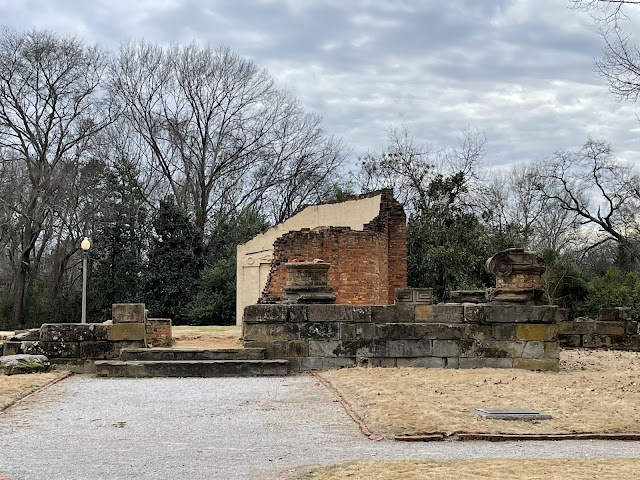On a pleasant day in January 2023, my son Amos and I made a trip to Tuscaloosa. He especially wanted to visit the Bryant Museum, and this piece reports on that visit. We also toured the grounds of the old state capitol ruins; I've written about that experience here and here.
The Bryant Museum was our first stop. Below I've included a few of the many photographs I took during the visit. I couldn't include more; there was just too much red--er, crimson. I'm an Auburn fan.
Despite that, I enjoyed the visit. I find the early history of football in the U.S. to be very interesting, and of course, this program has played and continues to play a major role in state history. I remember my maternal grandfather and Methodist minister John Miller Shores telling stories about listening to the radio as Alabama's football teams won games in the Rose Bowl on the west coast in the 1920s and 1930s. Those wins were a source of pride for so many residents of the poor state of Alabama.
I digress. Naturally, this museum has lots of space devoted to all the teams, coaches and players of the pre- and post-Bryant eras. Every coach except Mike Price gets some coverage, and I imagine they've updated the Nick Saban portion since we visited.
Stop by the museum if you get the chance. Even non-Alabama fans might enjoy it.





























































